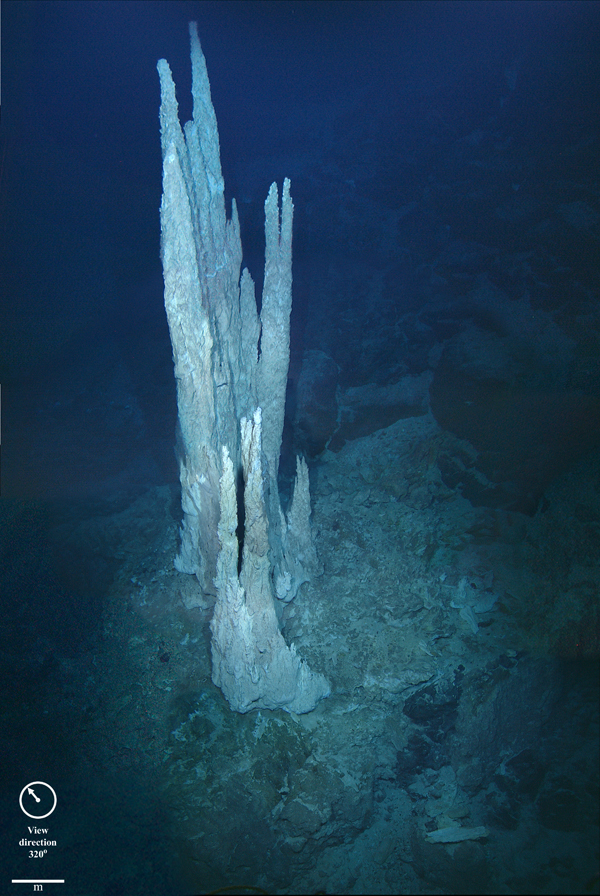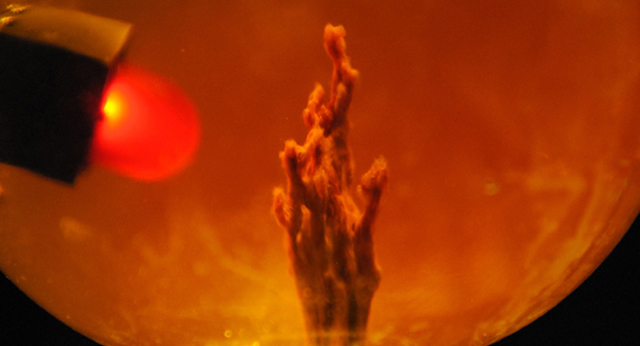Curious about how life got started on Earth 3.8 billion years ago? Here’s a thought: Why not recreate ancient hydrothermal vents in the lab, and see if they produce enough juice to power a lightbulb? That, at least, is what a bunch of scientists at the Jet Propulsion Lab decided to do — and the electrifying results are helping unravel life’s origin story.
Every living thing on Earth needs electricity, which is basically just the flow of charged particles across a gradient. In fact, our bodies are pulsing with electricity right now: Every time your heart beats or a synapse in your brain fires, tiny electric currents race through you. Some scientists believe life got its start by channeling free electricity from ‘chemical gardens’ at the bottom of the ocean. These chimney-shaped structures bubble up from the seafloor, producing natural electrochemical gradients, which could have helped the first strands of DNA assemble, or provided free energy to early microorganisms.

But if deep sea chimneys jumpstarted life, they’d have needed to produce a meaningful amount of electricity. We can’t travel back 3.8 billion years to see if this was the case, but we can create artificial chimneys in the lab that mimic what we think was happening on the ancient Earth. So that’s what scientists did. They built a tiny, alkali chimney using iron sulfide and iron hydroxide, geologic materials that can conduct electricity. This miniaturized lab experiment produced just under a volt of juice — enough to turn on an LED light. Which the scientists, ever quick with the puns, found quite shocking.
“These chimneys can act like electrical wires on the seafloor,” said Laurie Barge of NASA’s Jet Propulsion Laboratory, lead author of a new paper on the findings. “We’re harnessing energy as the first life on Earth might have.”
An alkali hydrothermal vent at the bottom of the Atlantic ocean known as the “Lost City.” Image via D. Kelley and M. Elend/University of Washington
So, little alkali iron chimneys, at least, might have produced enough power to stitch together the first DNA strands and proteins. Next up, the scientists plan on tinkering with the recipe, building chimneys out of other materials that were probably more common in Earth’s early oceans, such as molybdenum, nickel, hydrogen and CO2. They might start building chimneys that mimic conditions on ancient Mars, or in warm liquid oceans beneath Europa’s icy surface.
It’s crazy to imagine, but before we even get to Europa, we might have a pretty good idea whether there’s a free energy source for deep sea aliens to tap into. Just another day in science.
Top image: Researchers created “chemical gardens” — chimney-like structures normally found at bubbling vents on the seafloor — in the laboratory. Via NASA/JPL-Caltech
